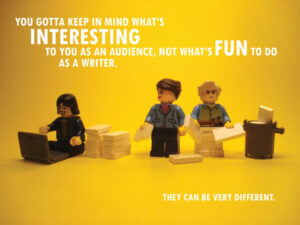
Life writing – which includes a wide spectrum of sub-genres such as (auto)biography, memoir, letter, diary, (digital) life stories, and oral histories – has a long tradition in the U.S. and is becoming more and more popular all over the world. An abundance of artifacts compiled by famous, semi-famous, and not-at-all-famous people fill public libraries, private bookshelves, research centers, social media, hard drives, and websites. And that’s actually not even surprising since writing and/or talking about ourselves is a deeply rooted cultural practice and comes very naturally to most human beings. We do it all the time: We tell a significant someone how our day was, we put together our résumé when applying for a new job, we talk about childhood memories with siblings or a close friend. However, talking and writing about ourselves in an academic context and, to boot, in a foreign language is a completely different story.
In the middle of the Covid-19 pandemic, my colleague Sabrina Völz and I asked students from different disciplines in our class “Confronting Contemporary Culture: Life Writing in Theory and Practice” to tell us their stories. And they did! Even though the seminar had to take place online (not the ideal prerequisite for creating a safe space and an atmosphere of mutual trust), we shared and discussed many stories – those of other authors and our own. Given that the language proficiency levels of the students as well as their prior experiences in creative writing and storytelling varied greatly, the seminar raised challenges on different levels.
In their first graded assignment, an oral presentation, the students spoke about their childhood memories guided by selected items assembled in a shoebox (Hallet 2015: 5, “My Childhood in a Box”). With creativity, imagination, and effort, the students turned their presentations into inspiring and moving stories, which often made us laugh, but also cry. In their written assignments, they composed narratives about particular aspects of their lives and identities. Some opted for expressing their stories with words only, others created (autobio)graphic comics, which they either created with the help of software tools introduced in the seminar or drew manually (wow!).
Some stories were stunning, some were staggering. Others were somewhere in between. The topics ranged from hard-to-digest matters such as anxiety, depression, loss, eating disorder, and experiences of micro-aggressions and racism all the way to light-hearted and humorous stories of intercultural encounters, inspiring tales of personal growth and finding one’s true self. The stories have something in common, though: they are authentic, they are worth being told, and they will hopefully be shared with others.
Thankfully, some of the students agreed to have their wonderful work published here. However, you’ll have to wait until next week to read Johanna Gabriela Hernández Schäfer’s short identity narrative, “50 Minutes Make a Name,” inspired by Brown Girl Dreaming by Jacqueline Woodson. Lisann Rothe’s story, “An Ode to Berlin – And My Grandmother” will follow on May 25. It tells a heart-warming story about her relationship to her grandmother, their shared love for history and beautiful Berlin. And finally, on June 1, Lena Hegemann’s graphic coming-of-age narrative “Calm as the Ocean” will appear. Her beautifully designed narrative takes us on a trip to New Zealand – a trip that turns out to be one of self-discovery.
The seminar and the pieces showcased here illustrate how productive and rewarding life writing and storytelling can be – even in an educational context and a foreign language. So, let’s agree that one day, baby, we’ll be old and think of all the stories that we (were) told.
7,570 Total Views, 5 Views Today






